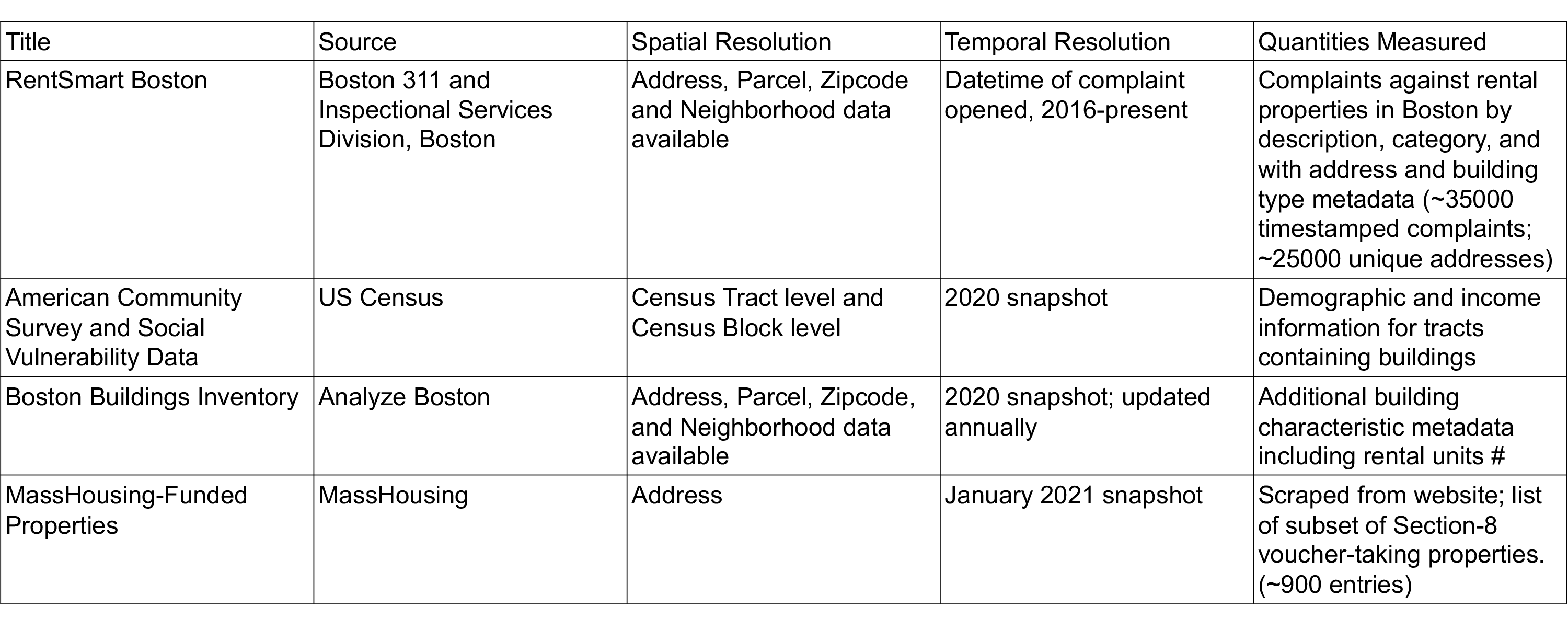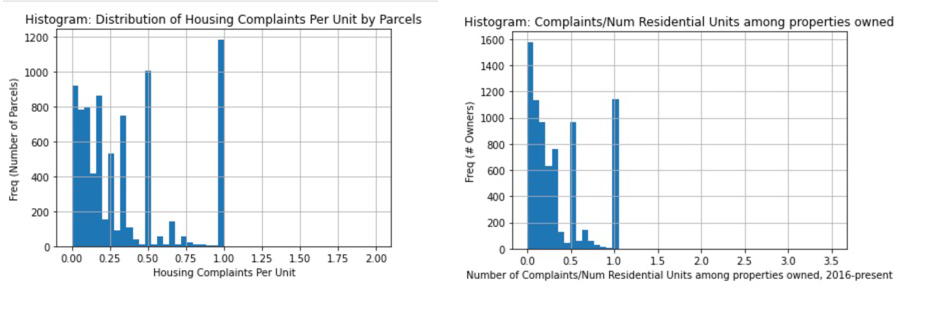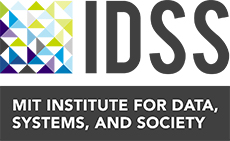Characterization of Affordable Housing Properties and Policy by Reported Concerns: Boston’s RentSmart Dataset
Camfield Tenants Association


Conversational Interviews and Collaboration:
- Tenants union of Camfield Estates, one of the first sites to participate in the Department of Housing and Urban Development’s (“HUD”) Demolition-Disposition(“Demo-Dispo”) program in 2001.
- A unique case in Boston where residents, a majority of whom are low-income, own the property.
- Longstanding relationship with MIT1
- Preliminary results: residents of affordable housing cite HUD-contracted property management under-regulation as a contributing factor to poor living experiences in the property.
Hypothesis
Because of the Housing and Urban Renewal Act of 1983, contracts to receive rental subsidies are now renewable but cannot be awarded to new companies. The study hypothesizes that the experiences of residents with property managers are a function of the amount/lack of competition for contracts.
Purpose (Preliminary)
- To build an interactive tool for low-income residents which characterizes property managers of affordable housing rentals in Boston.
- To see if a relationship exists between the enaction of the Housing and Urban Renewal Act of 1983 and housing complaints’ severity and frequency in the Boston RentSmart dataset.
Data

View of RentSmart Data Across Full Set of Rental Properties


Proposed Research Methods
- Spatial regression: are type and frequency of complaints spatially correlated?
- Causal analysis: how do type and frequency of complaints compare before and after the policy enaction?
- Qualitative methods: what aspects of the RentSmart data corroborate results of conversational interview and resident survey?
- Data interaction: can the results be presented in a form that is helpful for advocates in the space?
References:
1Pinkett, Randal. “The Camfield Estates – MIT Creating Community Connections Project: High Technology in a Low-to-Moderate Income Community.” Chapter. Managing IT/Community Partnerships in the 21st Century. IGI Global, 2002. https://doi.org/10.4018/978-1-930708-33-4.ch011.



